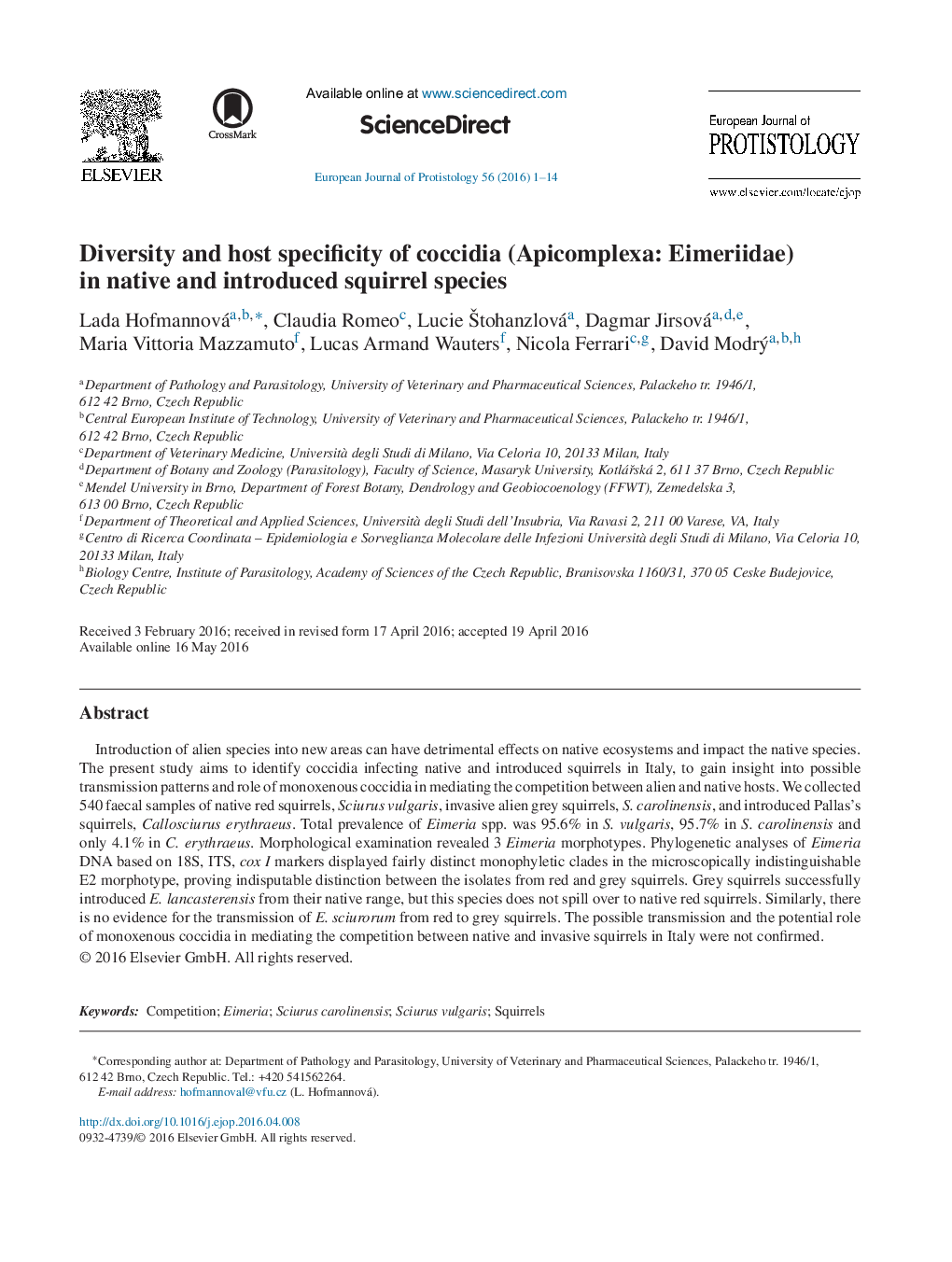| Article ID | Journal | Published Year | Pages | File Type |
|---|---|---|---|---|
| 2047115 | European Journal of Protistology | 2016 | 14 Pages |
•Coccidia can mediate competition between native and invasive hosts.•Morphological examination and phylogenetic analyses of Eimeria were necessary.•Transmission and influence of Eimeria in squirrels were not confirmed.
Introduction of alien species into new areas can have detrimental effects on native ecosystems and impact the native species. The present study aims to identify coccidia infecting native and introduced squirrels in Italy, to gain insight into possible transmission patterns and role of monoxenous coccidia in mediating the competition between alien and native hosts. We collected 540 faecal samples of native red squirrels, Sciurus vulgaris, invasive alien grey squirrels, S. carolinensis, and introduced Pallas's squirrels, Callosciurus erythraeus. Total prevalence of Eimeria spp. was 95.6% in S. vulgaris, 95.7% in S. carolinensis and only 4.1% in C. erythraeus. Morphological examination revealed 3 Eimeria morphotypes. Phylogenetic analyses of Eimeria DNA based on 18S, ITS, cox I markers displayed fairly distinct monophyletic clades in the microscopically indistinguishable E2 morphotype, proving indisputable distinction between the isolates from red and grey squirrels. Grey squirrels successfully introduced E. lancasterensis from their native range, but this species does not spill over to native red squirrels. Similarly, there is no evidence for the transmission of E. sciurorum from red to grey squirrels. The possible transmission and the potential role of monoxenous coccidia in mediating the competition between native and invasive squirrels in Italy were not confirmed.
